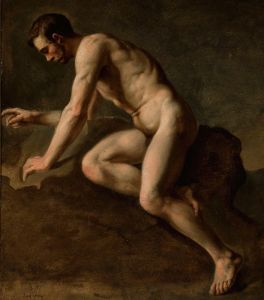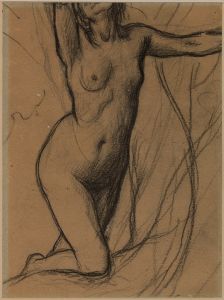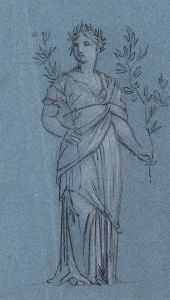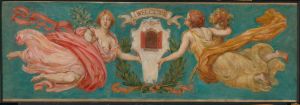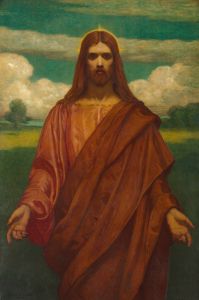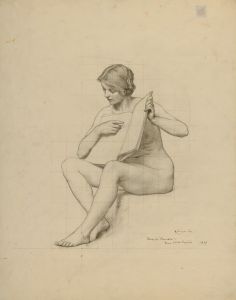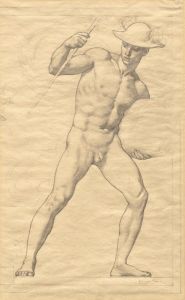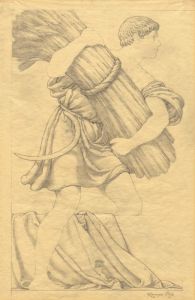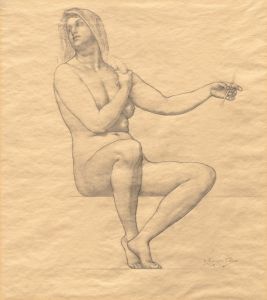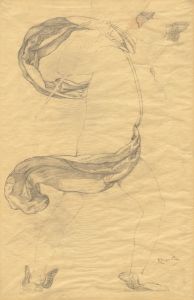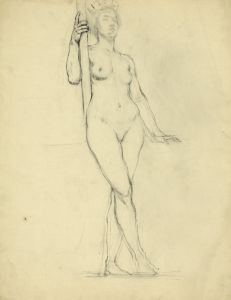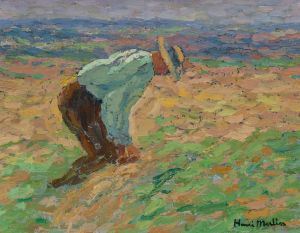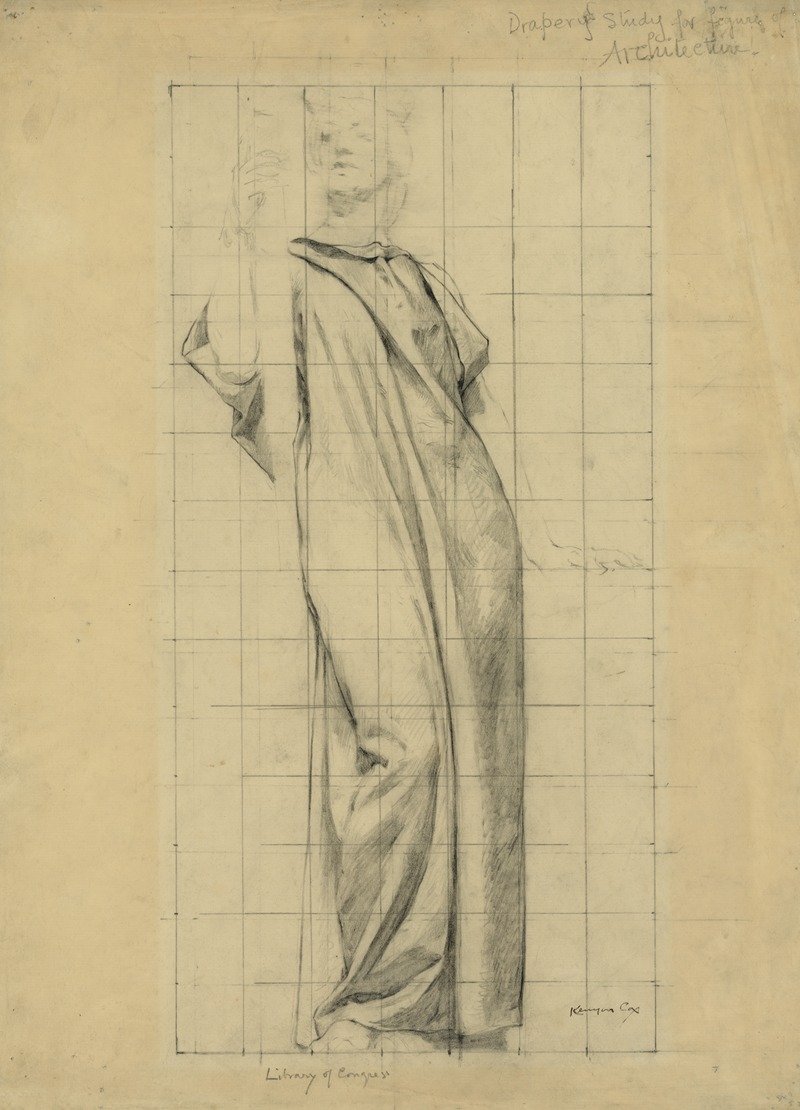
Clothed study for female figure of Architecture
A hand-painted replica of Kenyon Cox’s masterpiece Clothed study for female figure of Architecture, meticulously crafted by professional artists to capture the true essence of the original. Each piece is created with museum-quality canvas and rare mineral pigments, carefully painted by experienced artists with delicate brushstrokes and rich, layered colors to perfectly recreate the texture of the original artwork. Unlike machine-printed reproductions, this hand-painted version brings the painting to life, infused with the artist’s emotions and skill in every stroke. Whether for personal collection or home decoration, it instantly elevates the artistic atmosphere of any space.
Kenyon Cox was an influential American painter, illustrator, muralist, and writer, active during the late 19th and early 20th centuries. He was known for his academic style and his contributions to public art, particularly murals. One of his notable works is the "Clothed Study for Female Figure of Architecture," which reflects his commitment to classical themes and techniques.
The "Clothed Study for Female Figure of Architecture" is a preparatory work by Kenyon Cox, created as part of his process for larger mural projects. Cox was deeply influenced by the classical traditions of art, which is evident in his focus on the human figure and his use of allegorical subjects. This particular study showcases his skill in rendering the human form with precision and grace, characteristics that were highly valued in academic art circles of his time.
Cox's work often involved allegorical representations, where figures symbolized abstract concepts or ideals. In this study, the female figure likely represents the concept of architecture, a common theme in art that symbolizes stability, strength, and creativity. The use of a clothed figure aligns with Cox's adherence to classical modesty and his focus on the idealized human form, which was a hallmark of his style.
The study was part of Cox's preparation for larger works, possibly murals, which were a significant aspect of his career. Cox was involved in numerous public art projects, including murals for the Library of Congress and other significant buildings. His murals often depicted allegorical figures and were intended to convey moral and intellectual ideals, reflecting the cultural values of the period.
Kenyon Cox was not only a practitioner of art but also an educator and critic. He taught at the Art Students League of New York, where he influenced a generation of artists. His writings on art theory and criticism further established him as a key figure in the American art scene of his time. Cox's work, including studies like the "Clothed Study for Female Figure of Architecture," contributed to the dialogue on the role of art in public spaces and the importance of classical traditions in modern art.
The "Clothed Study for Female Figure of Architecture" exemplifies Cox's meticulous approach to composition and his dedication to the principles of academic art. His studies were not merely exercises in technique but were integral to his creative process, allowing him to explore and refine his ideas before executing them on a larger scale.
In summary, Kenyon Cox's "Clothed Study for Female Figure of Architecture" is a testament to his skill as an artist and his commitment to the classical ideals that shaped his work. Through his studies and finished works, Cox left a lasting impact on American art, particularly in the realm of public murals and allegorical representation. His legacy continues to be appreciated for its technical excellence and its embodiment of the cultural and intellectual aspirations of his era.





